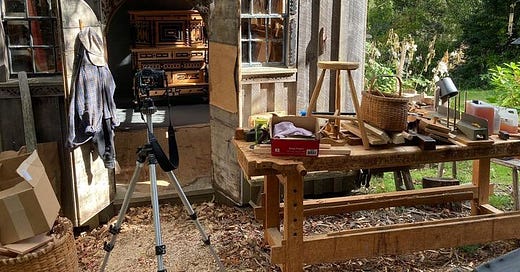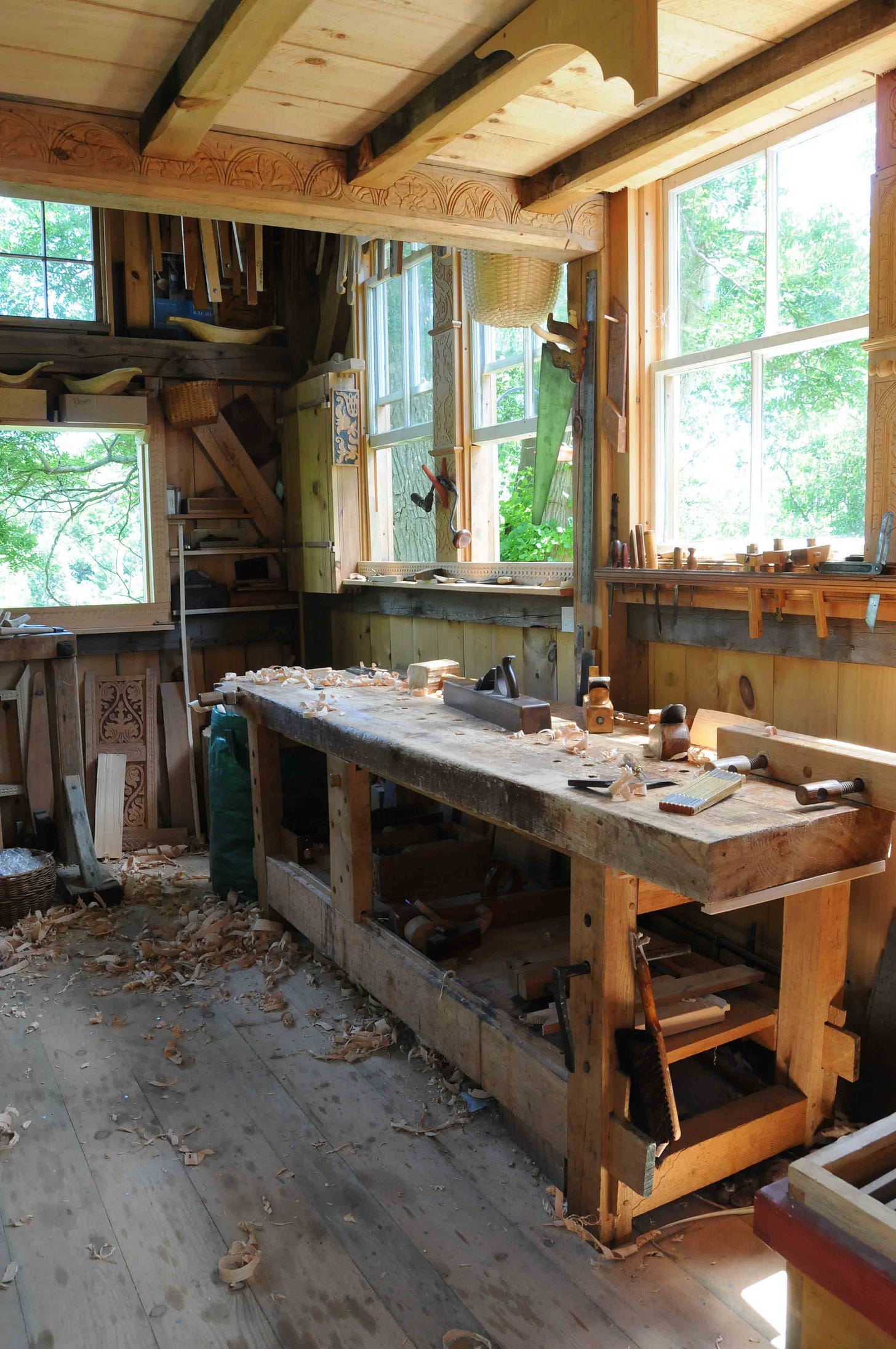I had to pretty much empty the whole shop to shoot photos of the cupboard I built. So I took that opportunity to snap some photos of my bench when it went back in later in the day. I built it in either 2000 or 2001, I forget. I didn’t know Chris Schwarz then, but I knew many of the same sources he did for building a bench. Joseph Moxon’s chapter on joinery, the Dominy benches at Winterthur, the Roubo benches in his book. And a few other illustrations maybe. Many years ago Scott Landis wrote The Workbench Book - in there is my friend Rob Tarule using a copy he made of Roubo’s bench. Rob used a thick maple top - I opted for white pine - thinking it would dry faster and easier than hardwood. Maybe that’s the case, I can’t say.
The benchtop is two pieces - a piece of pine that’s 4” x 17” by 8’. Stuck behind that is a 1” thick piece of oak that butts up to the pine top, bringing the bench top to 24” deep. That idea of an additional thinner board I got from the Dominy benches at Winterthur, detailed in Charles Hummel’s book With Hammer in Hand.
The frame is red oak timbers, legs about 3” x 4” - with a barefaced tenon on the top end. It’s a blind tenon/mortise, 1 1/2” thick by 4” wide. Not pinned, just gravity to keep it in place. No special dovetail or through joint like the Roubo bench.
There are no long rails up at the top, but down near the floor are large rails 2 1/2” x 6 1/2”, through-tenoned into the stiles. Probably stupid - I thought I’d be able to knock the bench down for moving it. I did so a few times and it was always a chore. I hope to never move it again now that the cupboard photos are done. These stock dimensions are nothing specific, they are what I could scrounge at the time. The short rails across the ends of the bench - top and bottom - are 2 1/2” x 4”. Below is the view from the end - to bring the oak board up level with the pine one I needed to boost it up with some blocking on top of that short apron. I have no idea how the Dominy bench achieves this - I made this up. I’m not even sure if that blocking is connected somehow. If it is, it’s just a wooden pin driven through holes in the parts.
Keep reading with a 7-day free trial
Subscribe to Follansbee's Substack to keep reading this post and get 7 days of free access to the full post archives.






